Finding Ways to Connect With Technology
Farmers rely on new ag technologies to provide efficiencies and advantages needed to grow crops profitably. Agtech companies rely on farmers for input and testing to ensure those innovations meet their on-farm needs and expectations. That synergy is the idea behind an exciting Illinois Soybean Association (ISA) project for 2021. AgTechConnect connects farmers interested in new technologies with agtech companies seeking on-farm testing partners. This program brings Illinois soybean farmers a tremendous opportunity to be among the first to try the latest agricultural innovations—an opportunity increasingly embraced by many farmers across the state. Technology testing has put ISA board [...]
Optimize Yields with Narrow Row Spacing
When it comes to row spacing, it’s hard to know which option will result in the best yields for your crop. Especially since there are so many options to choose from, ranging from 7.5-inch rows all the way to 30 inches. So how do you pick the best option for your farm? The current spacing of my soybeans is 15-inch rows. I believe there is a yield advantage with narrow rows as they achieve canopy closure faster and capture more light during the growing season. Quicker canopy closure also allows for greater shading of weed seedlings and reduces soil [...]
WEBINAR: PGR’s – The Missing Link to Next Level Soybean Yield
1 CEU in Crop Management
Quantifying the Economic Benefits of On-Farm Digital Technologies
This article was originally published on the farmdoc Daily website by Micah Pope and Steve Sonka. Precision agriculture has become mainstream in commercial agriculture production, and many would agree that it is “the way we farm today.” Utilization of technology varies from farmer to farmer, but the decision to invest in technology is commonly tied to the potential for increased efficiency and profitability. However, over the last couple of years, we’ve observed an interesting paradox when visiting with farmers who use precision agriculture technologies. Often, we would ask: “What is the economic return from use of those technologies?” That [...]
Highest Rated Precision Ag Products According to Farmers
In 2019, farmers across the United States submitted more than 3,000 reviews of precision farming products on Precision Ag Reviews. The reviews were collected online and in person at farm shows across the country. Precision Ag Reviews allows farmers to rate their experience with precision farming products and is an independent resource for farmers to reference before investing in precision equipment and technology. For 2019, the top five products with the highest overall rating, based on a five-star rating system that includes cost, ease of use, value and support included: Ag Leader, InCommand Display Climate, FieldView Drive Precision Planting, [...]
How to Make Soil Testing Work Smarter for Your Farm
Soil samples provide landowners a gauge or a trend of the potential nutrient availability for the coming crop. Typically, this information signals areas of a field that exceed or fall short of the field’s current average fertility programs. High zones of fertility could suggest that a crop is not removing what it was given. Likewise, a zone of low fertility could suggest that a crop is removing 100% or more of the nutrients it was given. This is where a good grid soil test map acts as an inverse yield map over time. You may be wondering, though, how [...]
Five Easy Ways to Use Digital Ag to Improve Production on Your Farm
There are many digital ag platforms available to today’s farmers. These powerful tools allow growers to easily summarize and analyze their results from past growing seasons. However, if you are only using your digital platform to look at yield data, you are missing out on an opportunity to improve your operation in numerous ways. Here are five ways you can improve your return on investment with digital agriculture. Optimize your inputs One way some digital ag tools create value is by allowing growers to create variable planting rate prescriptions. These prescriptions can be automatically generated and use prior years’ [...]
7 Apps to Use on Your Farm This Year
Whether we like it or not, cell phones, iPads and apps have become a part of our daily lives. These technologies have ushered in a new era of agriculture: non-traditional tools that help producers and agronomists manage risk and improve production. Recently, CropLife magazine published an article highlighting several new apps for 2020; below are a few that stood out to me and could be worth further investigation for incorporation into your operation. Farm Service Manager: Service logs for equipment and machinery By having digital logs available at any time, you can refence tasks that need to be done, [...]
Potassium and Soybean Production
Having spent my time as a CCA Soy Envoy writing about micronutrients, sulfur, nitrogen and phosphorus, it seems appropriate to close out the year focusing on potassium. Of the plant nutrients, potassium is part of the big 3—nitrogen, phosphorous and potassium (NPK). When I run soil tests in my area potassium is the most likely to be low, although some soils I work with can be high and stay high. Potassium helps plants withstand drought damage. It is also credited with general plant health and preventing lodging. Potassium helps the plant produce starch and transform sugars. This nutrient is [...]
Soil Sampling Considerations
When should I test soils? For years, fall soil sampling was the standard practice. However, it became a challenge to collect samples, get a lab report, develop a recommendation and apply nutrient needs prior to tillage or winter. In some situations, if the summer and fall were extremely dry, fall sampling could provide somewhat of an inaccurate measurement of true plant-available nutrients. As a result, a more modern method is to collect samples during the spring or early summer, which allows for greater time to develop an actionable plan. Should I GPS-track sample locations? In any science-based system, it’s [...]

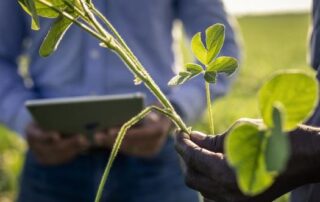
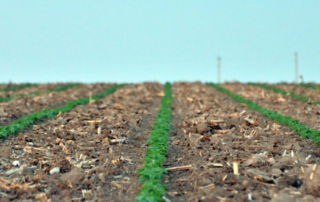
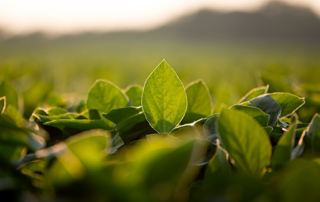

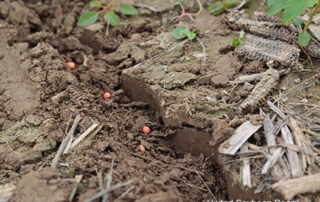
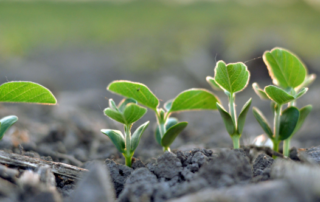

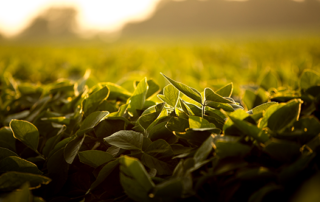
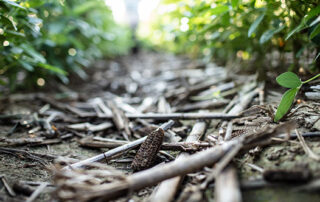

 and then
and then